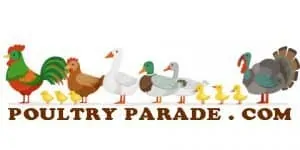There are many types of poultry out there – from the well-known chickens and ducks to the exotic peacocks – and it can be hard to decide which best suits you and your purpose.
What is right for you depends largely on what you plan to do with them. If you are planning to raise them for eggs, meat, or both, you will need to consider breeds that offer a lot of output with little input. If you are planning on raising them for their beauty, other factors will come into play.
If we define the best poultry as the species that offers the most across the board, the ultimate winner would be the chicken. This bird excels in nearly every practical category: egg-laying, meat production, pest control. But it also offers a wide range of ornamental breeds.
There is no doubt that the chicken is a great bird, but it’s not the best in every situation and for every person. In this article, I will compare the best poultry for each use-case that I have come across through my research and personal experience and give you a better insight on what may be the best bird for you.
Table of Contents
What Is the Best Poultry Depends on Your Needs
There are many reasons why different poultry breeds suit different people. Some best suit those who raise them for eggs, meat, or both, while others prefer beauty over productivity. The purposes of poultry mainly include the following categories:
- Egg production
- Meat production
- Cooking and culinary value
- Beauty and ornamental purposes
- Organic gardening and pest control
- Entertainment and activity
- Exotic and rare breeds
Sometimes there can be an overlap between the different categories. For example, a lot of people raise chickens for both meat and eggs. However, there is no one best breed for every purpose or even two of the above. While some poultry are very versatile, there are always one specific species or breed that best suit one purpose best.
Below we will go through all of these various categories and the species that are best suited for them.
The Best Poultry for Egg Production
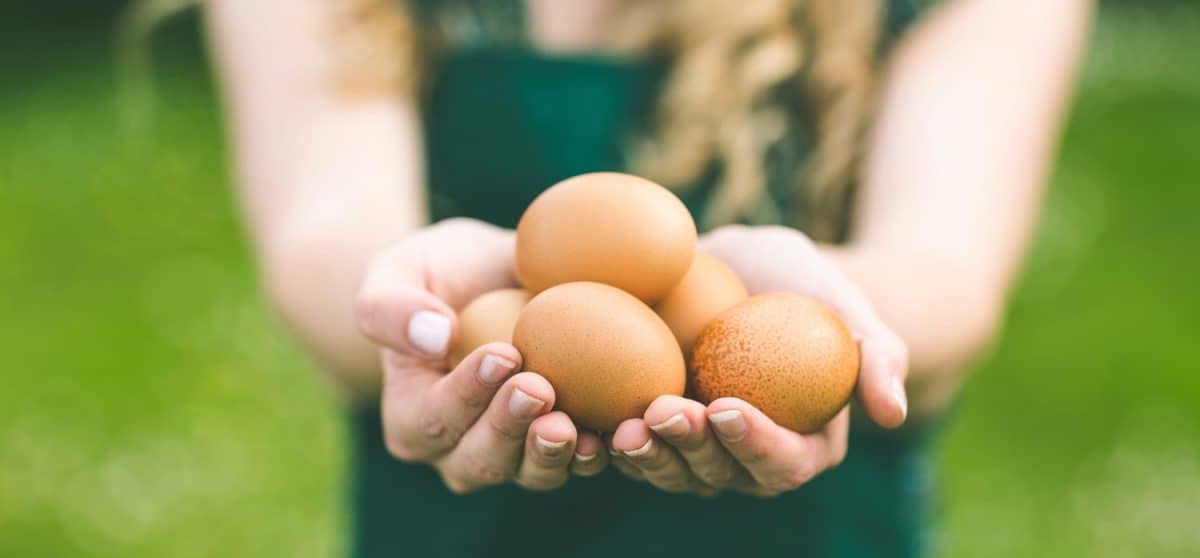
If egg production is your primary purpose, you will need a poultry species that can produce a lot of eggs at the lowest possible feed cost. They should also be able to lay for several years before becoming too old to lay eggs. In addition, you will want eggs that are not too small because small eggs take more effort to collect, they are harder to store, and they tend to be harder to peel.
The best poultry for egg production is the layer chicken. Layer chickens are a category of chicken breeds that efficiently utilize their feed to produce a lot of eggs.
There are multiple great layer chickens, each with their own best characteristics. Below are the three greatest layer chicken breeds in terms of the number of eggs laid:
1. ISA Brown: This formidable layer hen can lay up to 350 eggs per year. These lean hens are very popular among commercial farmers because they are disease resistant and have great feed conversion.
Note that the ISA Brown is a hybrid chicken that can only be bred true by commercial breeders, so you will have to order certified chicks if you want to ensure solid, continuous egg production.
2. Australorp: A large, Australian-bred chicken that will typically provide you with over 300 eggs a year if given enough room. They are beautiful, calm, and very family-friendly chickens. Due to their size, their feed conversion is noticeably lower than the ISA Brown, but you can keep the costs down by letting them free-range and forage for most of their own food.
3. Rhode Island Red: With an average annual egg production of close to 300 per hen, these giant American chickens are greatly suited for small families and homesteaders. They lay big brown eggs, and they are delightfully easy-going. Like the Australorp, the Rhode Island Red does eat a lot of feed, so it’s best to let them free-range and forage.
There are many other layer chickens out there, but these are the breeds I would suggest if egg production is your top priority.
Chickens are generally the most efficient egg layers. Very few other poultry species can compete in terms of egg production per pound of feed and square feet. While there are some non-chicken layer birds, they usually require a lot more care and much higher costs per pound of eggs produced.
However, if you have sufficient space and don’t mind the mess, certain duck breeds can also be excellent egg layers. An average duck will lay around 2 dozen eggs a year, and the best breeds can produce over 300.
The preferred duck breeds for egg production are Welsh Harlequin, Khaki Campbell, and Indian Runner Ducks. Read more about the best duck breeds for eggs in this linked article. I also recommend this beginner’s guide on how to keep ducks.
The Best Poultry for Meat Production
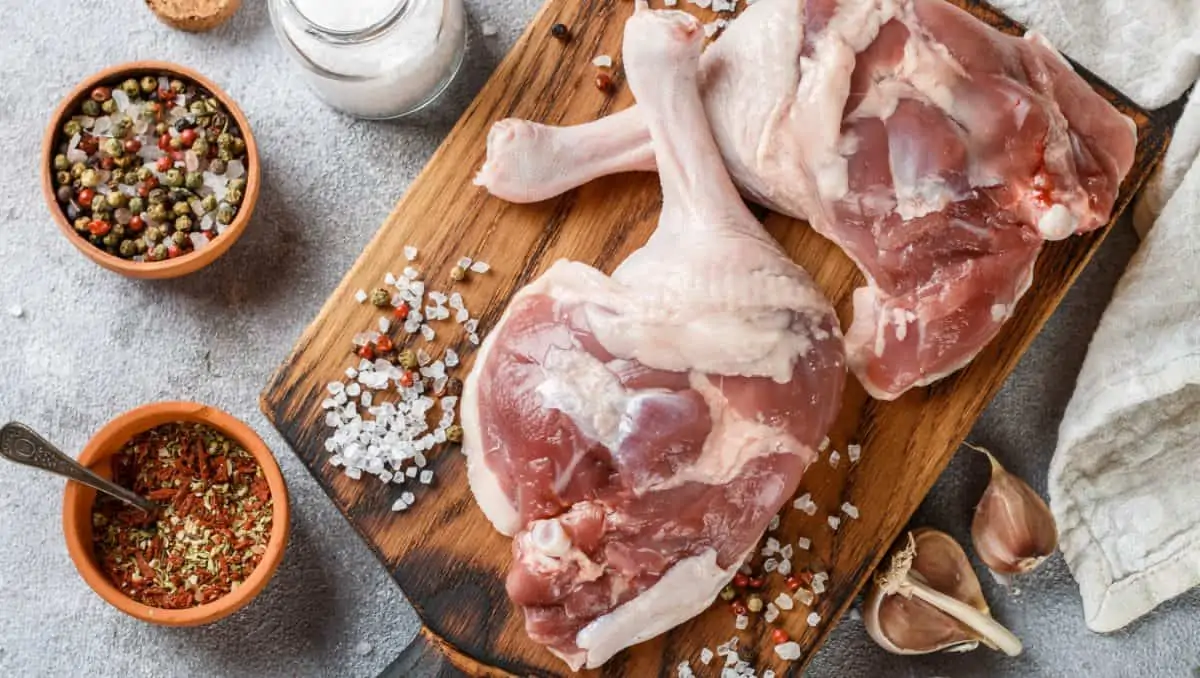
If meat production is your primary purpose, you will want a species best suited for high feed conversion and healthy meat production with a minimum of waste. Not only should they grow quickly, but their meat should also be tender and suit most people’s palate.
The best poultry for meat production is the broiler chicken: A chicken specifically bred for meat will convert most of its feed into meat, requires very little space, and takes less than three months to reach slaughtering weight.
There are many great broiler chickens out there, but the most efficient is the Cornish Cross. These meat chickens are industrious and productive, they reach slaughter weight quickly (6-9 weeks), and they gain a lot of weight without moving about much, which makes their meat juicy.
If chickens aren’t for you, then consider turkeys or geese. Both are well-suited for small families and homesteaders. These large birds do take up more space than broiler chickens, but they provide a bit of flavor variation, and you can produce a lot of meat with just a few birds.
The most efficient meat turkey would be the Broad Breasted Whites. These are large industrial birds that can grow to 40 pounds (under perfect conditions) and reach slaughter weight in only 16 – 20 weeks. However, they are prone to disease and other health issues. If you prefer a heritage breed, the White Holland is an efficient and family-friendly alternative.
Geese are well-suited for homesteaders and small family farms with a good-sized plot of grassland. They take up more space than turkeys but still produce a significant amount of meat. Geese are great foragers that thrive on grass and will save you money on feed. A good meat goose will reach around 25 pounds in just 9-12 weeks.
The best meat geese are the Embden and Toulouse breeds, both of which grow to well over 20 pounds and have a calm temperament. They are also great mothers if you want to breed your own meat geese.
Tip: If you are planning to pluck your meat birds by hand, I suggest going with white breeds. Any dark feathers that you may have overlooked are much more visible and may put off your family or dinner guests.
The Best Poultry for Cooking and Culinary Experiences
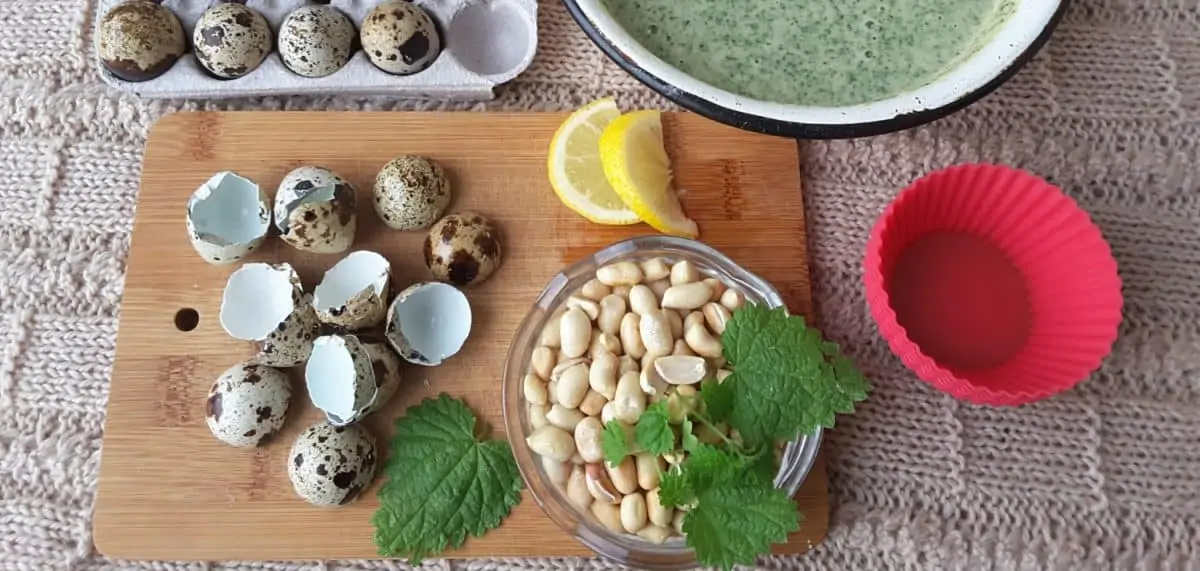
One could argue that the best meat birds are also the best options from a culinary standpoint. But the difference is in quality versus quantity. Some poultry species are not hyper-efficient or easy to keep, but they make up for it in taste.
If you want the best-tasting poultry, then you will want to consider some more exotic options that are not commonly available in the supermarket or commonly produced on large-scale industrial farms.
While, say, chicken meat is often used as a medium for other flavors, and the actual taste of the meat is less important as long as it is not too gamey, there are meats that are best appreciated on their own.
One example of this is the duck, which can be best described as chicken with a gamier flavor profile. This can appeal to some people and turn others away altogether, but there is no doubt that duck meat is flavorful and very popular in some parts of the world.
Quail is another example of an interesting and tasty meat bird best appreciated on its own. Many people describe them as a cross between chicken and rabbit, which isn’t far off the mark. Quail produce tender and flavorful meat, and their small size also makes an interesting dining experience, where everyone can enjoy an entire bird or two.
Quail are also great egg layers. One quail will lay about one egg a day throughout the spring, summer, and fall. Their eggs are about a sixth the size of chicken eggs and thus not optimal for baking, omelets, etc. But their tiny size makes them interesting and fun on the dinner table.
Pheasant and pigeon fall into the same category as quail with regards to their flavorful meat. Although they are a bit gamier, which some people prefer and some do not.
If you want to keep poultry for their taste of wild birds, either of these species should be on your list. But if I had to choose one, I would choose the quail for its dual purpose as meat and egg layers.
The Best Poultry for Beauty and Ornamental Purposes
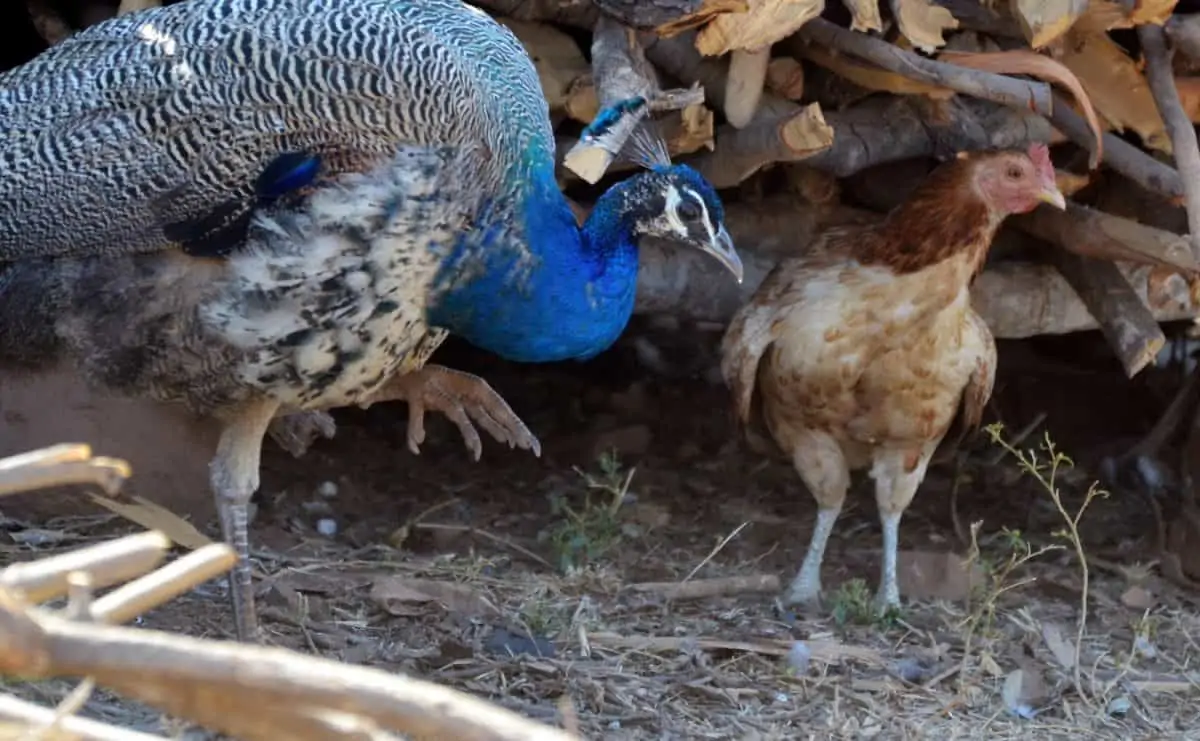
Not everybody keeps poultry for mainly practical reasons. Some keep them for their beauty and the joy they bring to their home. If you love exotic birds that are best appreciated for their beauty, then the peafowl is an outstanding choice. Peafowl are best known for their peacock male, which has a long and distinctively colored tail that makes them instantly recognizable.
Like many other decorative things, peacocks are not so easy to keep, and they require a proper setup to stay healthy. They are best kept in large outdoor pens or on properties with plenty of room and good shelters.
Peafowl are also quite sensitive to diseases and parasites, and you need to be cautious when it comes to their diet and general health care. However, if you are willing to commit to some additional work and effort, they surely will impress and bring years of joy.
There are also other types of decorative breeds of more ordinary poultry species highly appreciated for their beauty: Chickens with fancy feather patterns can make great additions to any homestead. The Houdan, Polish, and Sultan chickens are well known for their beautiful feather patterns.
While these ornamental chickens are best appreciated for their beauty, they also come with the same benefits as any other chicken: eggs, meat, and companionship. However, they are not the most prolific layers, and their meat tends to be of medium quality. But if you don’t mind this and are looking for something other than the usual breeds, then these are great breeds for you.
There are also several pigeon breeds specifically bred for their interesting feather patterns, such as Frillback or Indian Fantail pigeons. Pigeons are not worthwhile egg-layers, and the meat on these ‘fancy pigeons’ is generally too lean and very limited, so they are best appreciated for their beauty.
There are pigeon exhibitions all other the country, so if you are the competitive type, there are lots of opportunities to get involved.
The Best Poultry for Organic Gardening and Pest Control
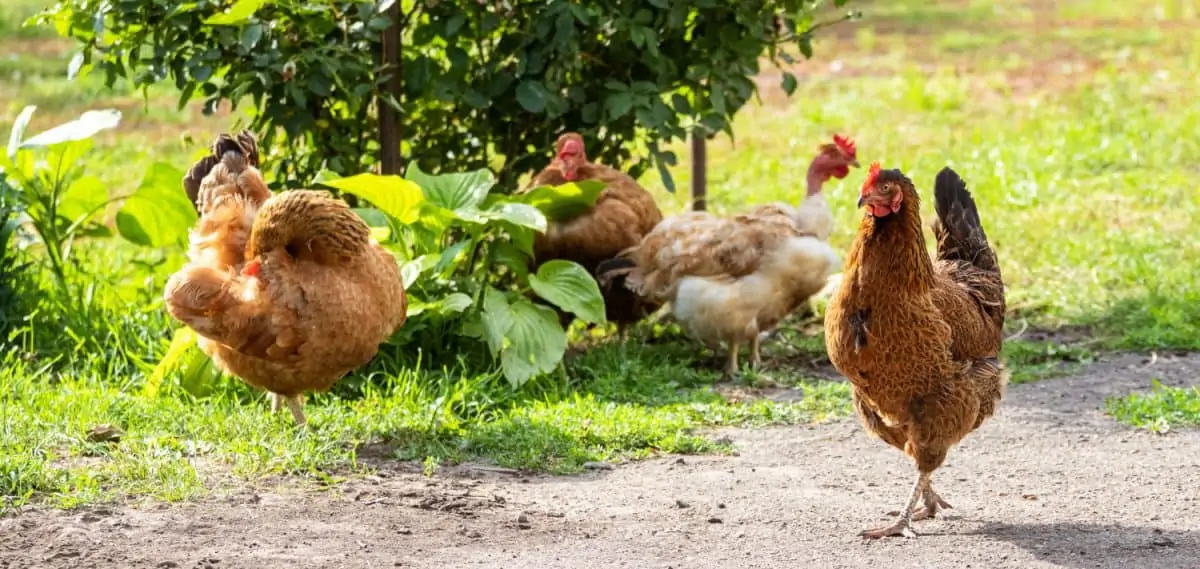
Say you love to grow organic produce from your garden, and you don’t want to use chemical fertilizers, pesticides, or herbicides. And let’s face it- the best way to accomplish that is by preventing pests in the first place rather than dealing with them once they’ve arrived.
That’s where chickens come in handy. A small flock of hens will be more than enough to take care of most pest problems in a typical backyard. Their ancient predator instincts kick in whenever they see a bug or a tick, so having a few chickens around is like hiring a full-time security guard for your plants. And if you let your chickens loose under fruit trees, they will eat the fallen fruits that are often hosts to maggots.
Chickens also keep your plants and garden thriving by converting bugs, seeds, and kitchen scraps into fertilizer. One chicken is capable of turning over an average of 100 pounds of organic material into 70 pounds of manure every year, and you will never need to purchase any chemical fertilizer again.
Chickens also scratch the soil, turning it over, removing weeds, and allowing water to reach the roots of plants. And best of all, they’re great companions that will keep you company while you work in the garden.
Ducks are also pretty good at keeping your plants pest-free, and they certainly enjoy spreading their manure around. Although they won’t scratch the ground as chickens do, ducks are welcome companions for a small flock of hens. Some duck breeds (Moscovy and Indian Runner in particular) also love eating slugs, which is less appealing to most chickens.
Of course, you will have to keep your chickens and/or ducks out of your vegetable garden during the growing season. But I highly recommend letting them prepare the plot for you by scratching, eating bugs, and poop all over the place for several weeks before you sow. This will save you a lot of effort and produce superior crops.
The Best Poultry for Entertainment and Activity

Some people keep poultry because they want an active and social hobby. They find it a great pastime to spend time with their animals. If this is what you want, homing pigeons are a great option.
The process of training a young homing pigeon is done by taking it away from its home (pigeon loft) and releasing it. You then return to the loft and await its arrival. The homing pigeon-keeper also needs to go out in different directions to help the pigeon learn how to navigate the unknown territory.
Then you gradually increase the distance from the release point to the loft. It is quite challenging, and you may have to reduce the distance for a while if your pigeon takes too long to return home.
The more you practice, the better your pigeon will become at flying home from great distances. This can be a very enjoyable hobby for the whole family. It can be extremely rewarding to watch your pigeons arriving back home from further and further distances.
Homing pigeons can be a fun hobby just for you alone, but it can also be a social activity. Most homing pigeon trainers join a local or national club and compete in the sport of pigeon racing. There are numerous local, regional, and nationwide races you can participate in.
The Best Poultry for Exotic and Rare Breeds
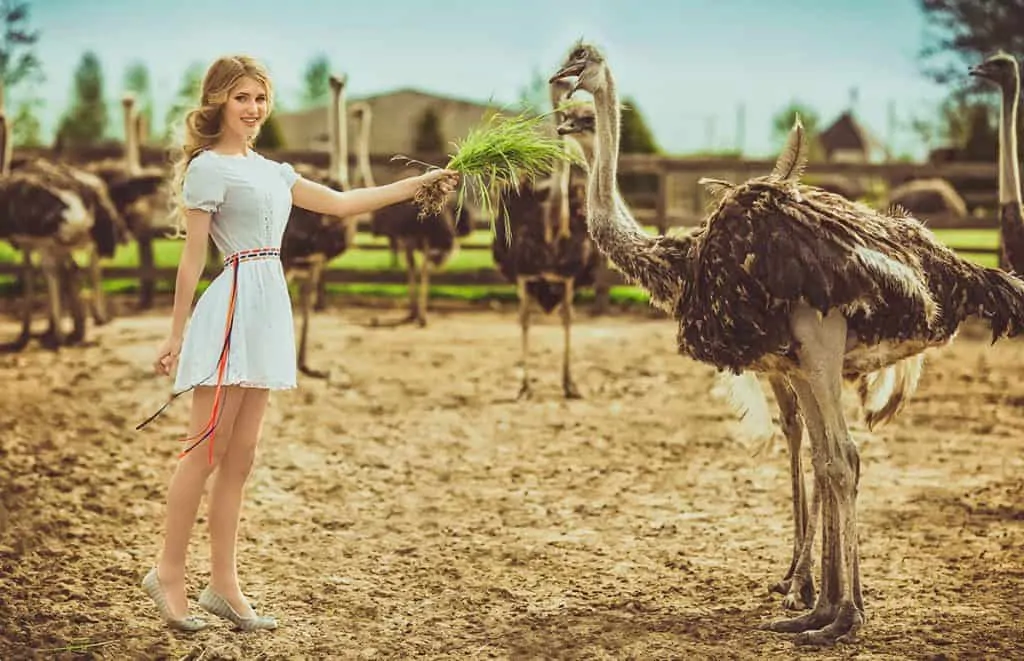
Let’s say you already have chickens, ducks, etcetera, and now you want to try something new. Perhaps something that is more challenging, or you might want to try something exotic or unusual. Well, you’re in luck because there are several varieties of unique poultry that you can select from.
Ostrich: The ostrich is the largest living bird on earth and is native to Africa. They are now raised all over the world for their feathers and meat. Some also keep them for their eggs, which are the largest in the world, while others just like hanging out with a giant bird.
If you want a rare animal that really stands out, then you should definitely consider the ostrich. Read this guide if you want to learn how to select, care for, and handle an ostrich.
Emu: If ostriches are too large and intimidating, emus might be more your speed. They were once hunted for their oil and meat, but they’re now raised on farms as a source of food and also for the leather that can be made from their hides.
Emus cannot fly (although they can jump), and adult males weigh up to 90 pounds. Although you might need plenty of room to raise an Emu, they are very interesting animals that can live up to 10 years when properly cared for.
Peafowl: The peacock is perhaps the most impressive bird of them all. The male’s brilliant plumage has captivated people since the dawning of civilization itself. Peacocks are raised for their feathers and their contribution to the beauty of a garden. Keep in mind that they are quite large birds that require plenty of room to move around.
In Summary
It is no wonder chickens are so popular. When you think about what they offer, it makes sense that we find them in nearly every farm, homestead, and in millions of backyards. They’re in most respects the best poultry for egg and meat production. Some chicken breeds are also great for ornamental purposes, and they are amazing in organic gardening and pest control. And there’s even a whole world of rare breeds just waiting to be explored and preserved.
Ducks and other traditional species, such as turkeys and geese, also have a lot to offer. And if you really want to stand out, peafowl and ostriches are a great option.
Keep in mind that each species has its own unique quirks and challenges, so take your time when selecting the right bird for your preferences.
